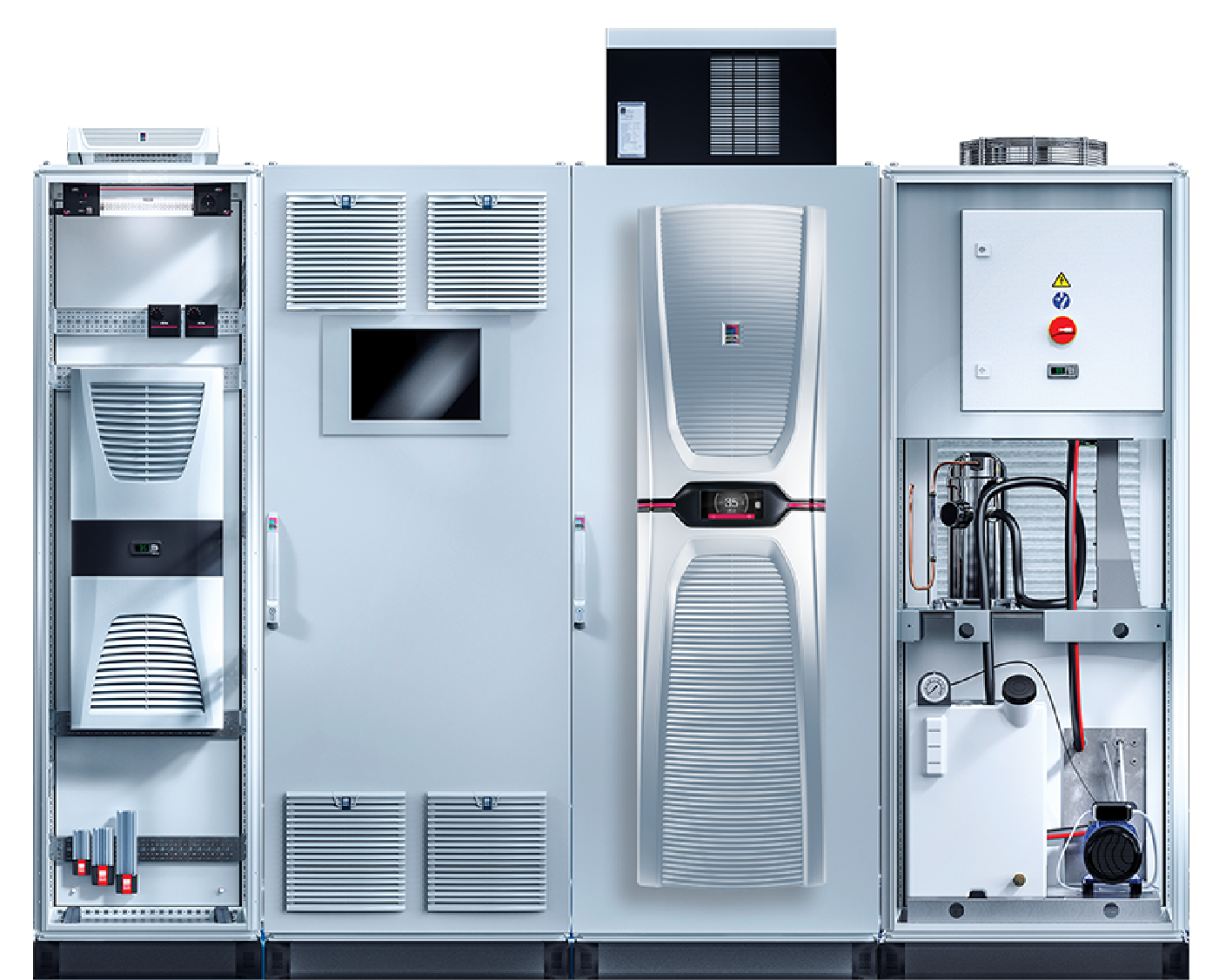
Any time you’re crossing the street at a busy intersection or cruising through the automated lane at the toll booth, odds are an industrial enclosure is not far away. In fact, the continued digitalization of our everyday lives and the proliferation of electronics and controls as the engine that automates our society means industrial enclosures are deployed in more unique applications than ever before. Many of these deployments are in outdoor environments where weather conditions and other hazards are very real challenges.
These challenges are only exacerbated when you add extreme cold and the necessity to provide adequate heating for these enclosures to protect the electronics inside. As with enclosure cooling solutions, targeted enclosure heating with the appropriate thermal output, efficient energy consumption, and flexibility for use in a variety of applications are mission-critical for the durability and longevity of industrial enclosures to weather the winter months.
So, let’s turn up the heat on this discussion and examine how enclosure heaters work, how to calculate the right thermal output, and proper installation procedures to better understand when an enclosure heater is the right solution.
How enclosure heaters work
Before you can decide whether an industrial enclosure heating solution is right for your application, let’s first take a look at how enclosure heaters work to combat detrimental occurrences such as the buildup of frost, ice, and condensation, as well as maintaining an optimal operating temperature for enclosed electronics.
With an enclosure heater, a resistor converts electricity into a heat source. This resistor, known as a PTC resistor, increases its resistance while the electric current decreases, which in turn decreases the enclosure temperature. Essentially, the PTC resistor functions as an acceleration pedal with a governing device on it to provide the appropriate thermal output while at the same time helping to ensure the electronics inside do not overheat and are not subjected to elevated temperatures that would hamper performance.
While much is made about protecting the electronics within an enclosure from cold temperatures, the flip side of this coin is preventing spikes in thermal outputs that can essentially fry the electronics within and result in significant downtime or decreases in productivity.
Optimal heating outputs
Calculating the optimal temperature to help prevent the enclosure from overheating while maintaining peak efficiency can be something of a delicate dance, especially depending on the severity and duration of the cold to which the enclosure is exposed. For example, imagine you’re looking to heat an enclosure with dimensions of 2000 x 600 x 500 mm (HxWxD) in a place where the temperature can drop to -5 °C in winter. Some components in the enclosure must remain free of frost, which is why the temperature should be above +10 °C if possible.
However, a relatively simple equation can help you identify the right heating output to optimize performance and enhance service life:
- Calculated enclosure area A = 4.38 m²
- Desired temperature in the enclosure Ti = +10 °C
- Minimum ambient temperature Tu = -5 °C
- Heat transfer coefficient k = 5.5 W/m²K
With these variables and a formula framework of “Pverw = k x A x (Ti-Tu),” it can be determined that optimal heating output for an industrial enclosure of this nature should be 361 watts. Of course, there are other contextual elements that could slightly alter this output projection, but a basic understanding of how enclosure heaters work and this equation for determining thermal output gives you a leg-up on identifying the right solution for your application.
Considerations for installing an enclosure heater
With an understanding of how enclosure heaters work and the data points you need to create the optimal heating output, the issue of successfully installing or integrating an enclosure heater comes into play.
Some of the more common applications for industrial enclosure heating solutions include traffic guidance or light systems, toll booths, sewage treatment plants, large-scale mobile hotspots or smartphone technology, and charging stations for electric vehicles. While each of these applications is quite different, there are a handful of important considerations for installing any enclosure heating solution that can determine efficiency and effectiveness.
Proper heater installation procedure includes:
- When installing enclosures outdoors, the capacity must be doubled
- Positioning the heater as low as possible inside the enclosure
- Installing the heater beneath the electronics that require targeted heating
- Ensuring the distance between the heating solution and the bottom of the enclosure must be at least 100 mm
- Allowing adequate free space around the heating solution
- Depending on the application, a thermostat and/or hygrostat should be used
The modular design and engineering of Rittal’s enclosure heating solutions not only account for these installation guidelines, but Rittal’s enclosures heater provide a variety of fan integration options, continuous thermal output with a variety of BTU/hr capabilities, dynamic thermostat interfaces, and aluminum construction for ease of installation.
In addition, Rittal’s enclosure heaters combine innovative state-of-the-art targeted heating with the ability to scale your heating solution no matter the application to regulate relative humidity, prevent temperatures from dropping below optimal dewpoints, and help eliminate corrosion and other electrical failures from condensation buildup.
Learn more about how an enclosure heating solution can help optimize your climate control system!

